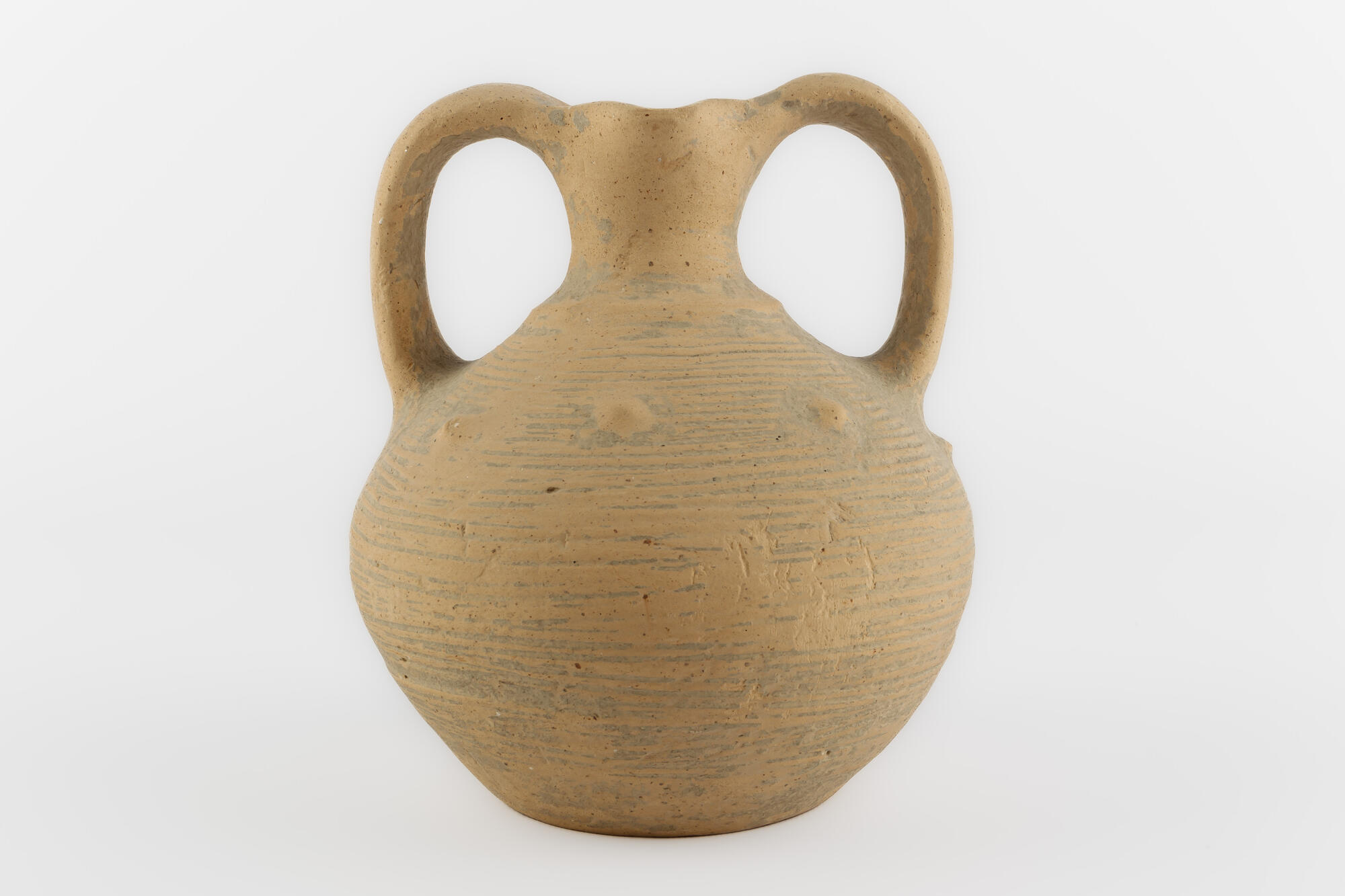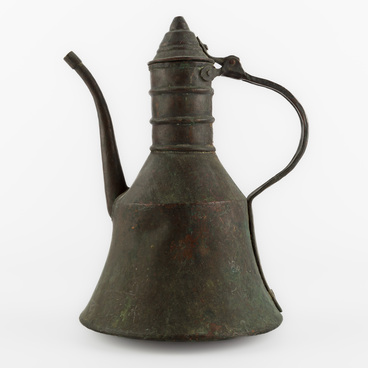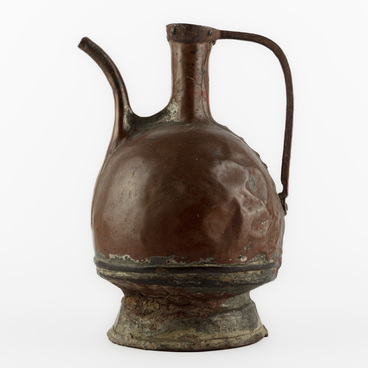In October 1987, museum employees M.G. Mineev and A.B. Grigoriev discovered a jug made of light clay with a spout. This example of Circassian pottery was found in a destroyed burial of the 10th–12th centuries on the “Potomstvenny” site of the Mikhailovsky Pass state farm in the village of Pshada.
Clay tableware are found during excavations of settlements and burials from the Bronze Age to the Middle Ages. The clay used to make the first vessels contained a large number of various impurities. For example, the ceramics found in the Gelendzhik region often contain sand, calcite and marl. Such containers were mostly handmade (except for imported ones). They were made according to the coil technique and were flat-bottomed. As a rule, the body smoothly continued into the bottom, and the edges were rounded. First, the artisan made the bottom of the vessel and a long coil of clay, which was attached to the bottom with the help of liquid clay. The coil was gradually wound in a spiral, forming a pot or jug of the desired height. The final product was decorated with molded patterns and ornaments, and then fired. The potter’s wheel appeared in the Northwest Caucasus much later. All ceramics were highly valued and considered a true fortune. They were used not only in everyday life, but also in various rituals. Despite the spread of Islam in the 16th century, people continued to believe that the deceased needed various objects for their afterlife, and left everything they needed in the graves. That is why archaeologists find such vessels in burials.
The jug from the museum’s permanent exhibition features molded inlays, which are found on handmade vessels as early as the Bronze Age. Such an ornament could have both aesthetic and ritual functions. The clay of this vessel is practically free of impurities, which indicates the high quality of raw materials. The walls of the vessel are thin and even. Most likely, it was made on a potter’s wheel. All this suggests that the technique of making clay vessels reached a very high level in the Northwest Caucasus in the Middle Ages, and local potters were no longer inferior to foreign ones. Such vessels were typical for the local Circassian tribes and were widely used as tableware.
Clay tableware are found during excavations of settlements and burials from the Bronze Age to the Middle Ages. The clay used to make the first vessels contained a large number of various impurities. For example, the ceramics found in the Gelendzhik region often contain sand, calcite and marl. Such containers were mostly handmade (except for imported ones). They were made according to the coil technique and were flat-bottomed. As a rule, the body smoothly continued into the bottom, and the edges were rounded. First, the artisan made the bottom of the vessel and a long coil of clay, which was attached to the bottom with the help of liquid clay. The coil was gradually wound in a spiral, forming a pot or jug of the desired height. The final product was decorated with molded patterns and ornaments, and then fired. The potter’s wheel appeared in the Northwest Caucasus much later. All ceramics were highly valued and considered a true fortune. They were used not only in everyday life, but also in various rituals. Despite the spread of Islam in the 16th century, people continued to believe that the deceased needed various objects for their afterlife, and left everything they needed in the graves. That is why archaeologists find such vessels in burials.
The jug from the museum’s permanent exhibition features molded inlays, which are found on handmade vessels as early as the Bronze Age. Such an ornament could have both aesthetic and ritual functions. The clay of this vessel is practically free of impurities, which indicates the high quality of raw materials. The walls of the vessel are thin and even. Most likely, it was made on a potter’s wheel. All this suggests that the technique of making clay vessels reached a very high level in the Northwest Caucasus in the Middle Ages, and local potters were no longer inferior to foreign ones. Such vessels were typical for the local Circassian tribes and were widely used as tableware.




